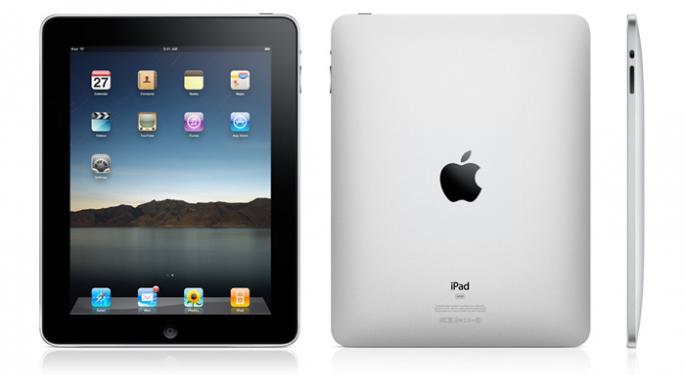If Kinect Succeeds, How Will Apple, Google and Others Respond?
For the time being, Apple (NASDAQ: AAPL) seems to be content with eliminating buttons so long as it can find a touchable surface to replace them with. But before the iPhone transformed the way we interact with mobile phones and other devices, touch screens received a much-needed boost from an unlikely source: Nintendo.
Back in 2004, Nintendo released the first major touch screen game system – the Nintendo DS. Its touch screen was vastly superior to anything else on the market, including the ill-fated Palm devices of the era.
Six years later, Microsoft (NASDAQ: MSFT) is attempting to replace buttons and touch screens with Kinect, a gesture-based, motion-controlled device for Xbox 360. Though it may have been designed with game players in mind, make no mistake: what we're seeing today is merely the tip of the iceberg.
If you've seen the film Minority Report, then you know what I'm getting at. If not, here's a quick rundown: using nothing more than a small device that wrapped around his fingers, Tom Cruise was able to interact with a giant screen (a screen he never actually touched).
Without question, his quick and seamless interactions were something out of Hollywood. But there was a time when iPhone-caliber devices were as well.
There's little doubt in my mind that Apple, Google (NASDAQ: GOOG), Sony (NYSE: SNE), and other tech companies are watching Kinect closely, first for its technology and second for the potential market that it could create.
If it is successful, it could greatly change the future of software interactions. But who will be the first to strike? It wouldn't be that hard for Kinect's own creator to produce a Windows-based version for navigating websites, Microsoft Office, and other key programs. Imagine waving your hand to execute a PowerPoint presentation, or lifting a few fingers to adjust a spreadsheet in Excel. That would be amazing.
Honestly, I'm surprised Microsoft hasn't already started producing an app store specifically for Kinect. Considering what apps did for the iPhone (and now the iPad, and soon Mac computers), there's a good chance that Kinect users wouldn't mind spending $0.99 for an excuse to flail their arms in front of a TV screen.
More than likely, if Google were to follow Microsoft's lead, it would first attempt to do so with Google Earth. Just think of how much fun it would be to interact with the 3D environments using nothing more than your hands. At this point, I'm not sure if Google would go through the trouble of releasing a full-fledged motion device on its own. But a partnership with another company (or, more likely, an acquisition of another company's creation) does not seem out of the question.
As far as Apple is concerned, I suspect the company will tackle this from a different angle. First of all, the iPod creator might wish to wait a few years to see if the mouse and controller-free hype blows over. While you might not think that it's not in Apple's character to “wait and see,” let's not forget about how many touch screen devices there were before the iPhone arrived. Apple took the time to produce a polished product and released it when the time was right.
But if/when the day comes when Apple decides to enter the world of gesture-based interactivity, expect it to come from a standalone device – not an iPad, MacBook or Mac Pro upgrade.
Sony, however, isn't likely to respond very quickly. For several years the company has struggled to boost sales of its motion-based EyeToy technology. Sales of PS Move (a controller that requires the EyeToy) could change that. But while the camera/controller combo is awesome for interactive entertainment, Sony has yet to prove that it has any significant value outside of video games.
In the long-term, that could give Kinect the edge.
© 2025 Benzinga.com. Benzinga does not provide investment advice. All rights reserved.
Posted-In: Apple EyeToy Google Kinect Microsoft PS Move SonyTech



